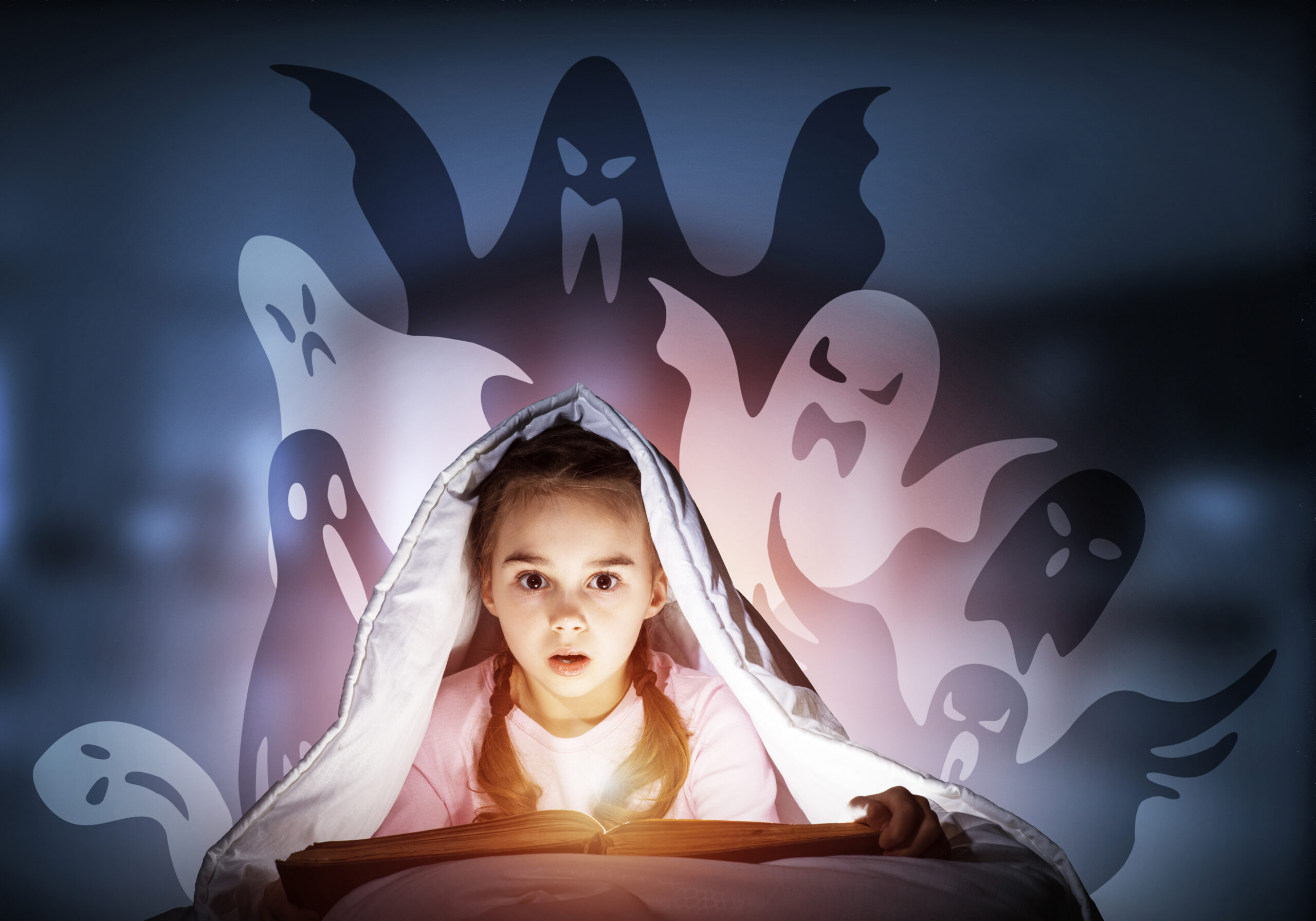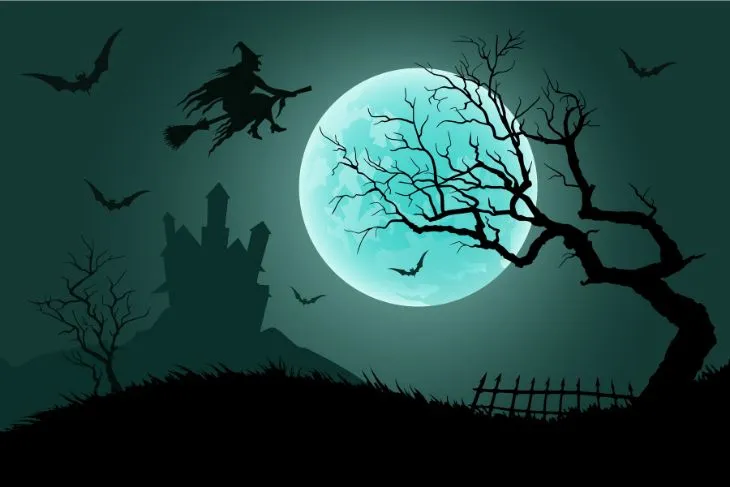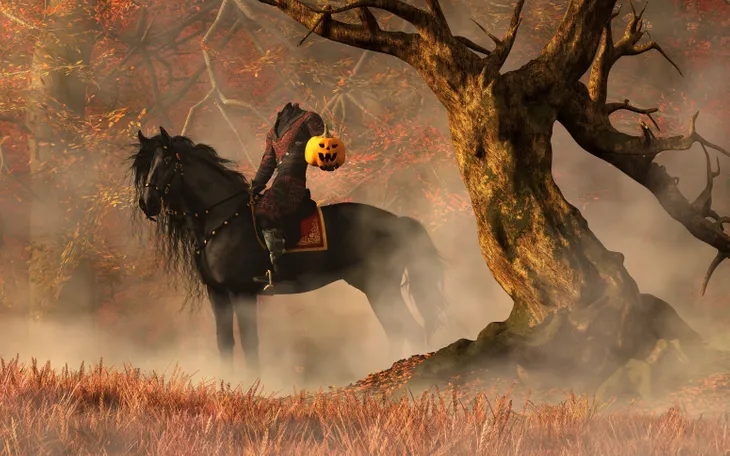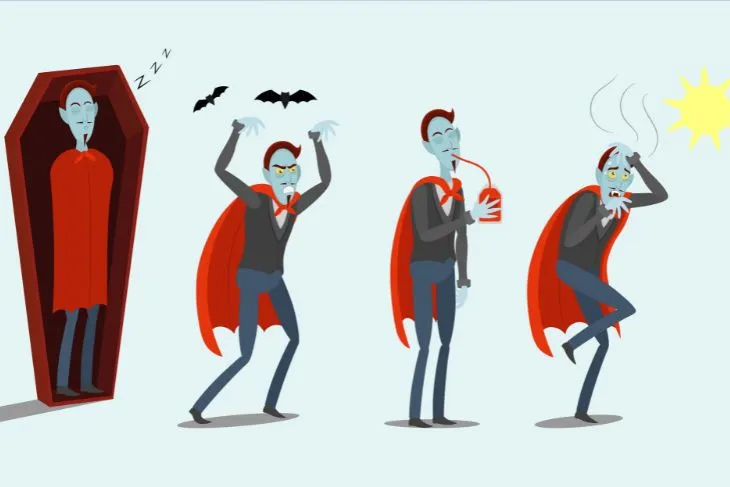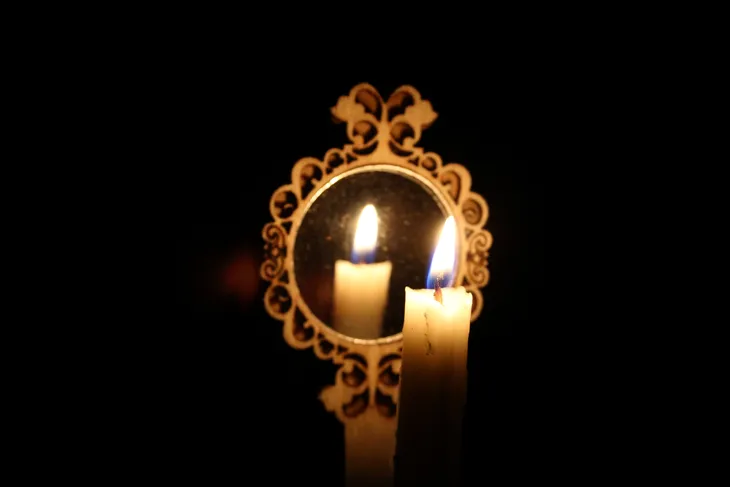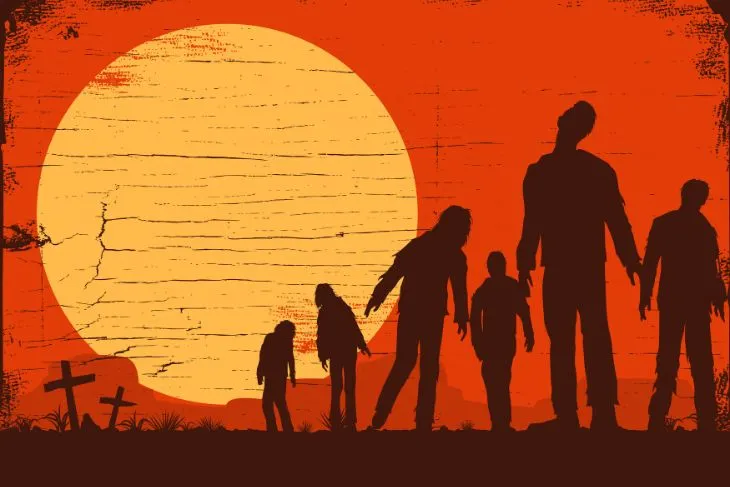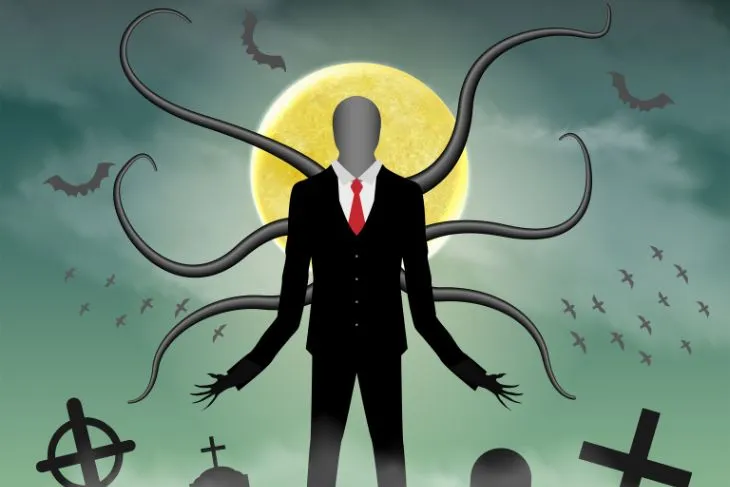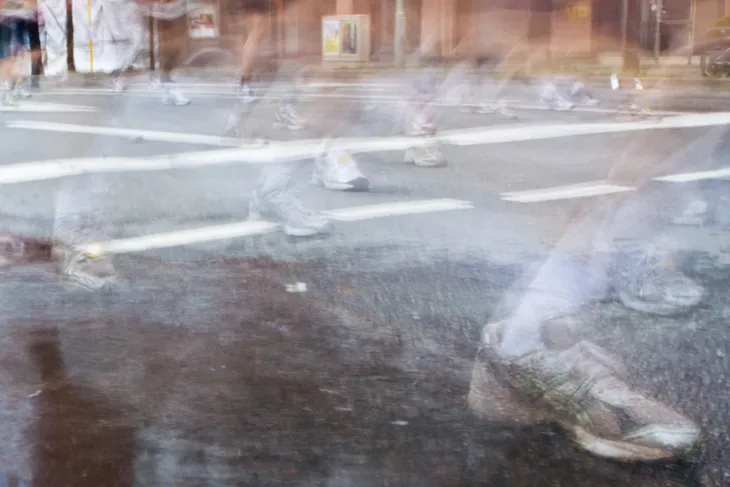- Halloween was born out of the ancient Celtic festival of Samhain when people would wear costumes and have bonfires to ward off ghosts.
- It has now evolved into something much different, but still has roots in all things spooky and scary.
- This article explores the truth and origins behind some of Halloween’s spookiest legends and tales.
Each year on October 31st people celebrate Halloween. It’s arguably the most celebrated day of the month! In the weeks leading up to Halloween, people love to indulge in all things spooky. There will be decorations, parties, costumes, and of course…scary stories. What would Halloween be without a little scare? Even its origin story leans into this.
This holiday dates back to the ancient Celtic festival of Samhain when people believed the boundary between the living and deceased is blurred. It has since evolved into a celebratory day where people dress up as everything from witches to TV characters. But at the heart of it is still a dark history. We’re looking into the spookiest Halloween legends and tales, and where they came from…
Witches
Throughout history witches are depicted as evil women with warts on their noses and untamed hair. Wearing capes and pointy hats, they’re often seen hunched over cauldrons or cackling as they ride off on their brooms. Turns out, there is a real history of witches, says History.com and it dates as far back as 900 B.C.
While most early witches were people who practiced witchcraft, many were natural healers. They were referred to as “wise women” who’s profession was largely misunderstood. The earliest records of them are in the Bible, but History.com notes it wasn’t until the mid-1400s when the real witch hysteria took hold in Europe. After this, they became the target of scrutiny and trial.
The portrayal of witches on brooms dates back to 1451 when French poet Martin Le Francs manuscript Le Champion des Dames (The Defender of Ladies) released two illustrations of them on brooms. According to History.com, the truth likely came from a pagan fertility ritual where “rural farmers would leap and dance astride poles, pitchforks or brooms in the light of the full moon to encourage the growth of their crops.” This broomstick dance later evolved into something more sinister, like witches flying through the night to illicit meetings.
Werewolves
These furry, four-legged creatures are certainly not a man’s best friend. This mythological creature is known in most legends to morph from a man to a vicious wolf when a full moon rises. Others depict some kind of mutant combination of a human and wolf, notes History.com. It’s unclear where exactly the tales of werewolves began, but their origins can be traced as far back as Greek mythology and early Nordic folklore.
In Greek mythology, werewolves appear in the Legend of Lycaon where the son of Pelasgus makes Zeus mad. As punishment he turns Lycaon and his sons into wolves, writes History.com. There’s also the Saga of the Volsungs from Nordic folklore. In this tale a father and son discover wold pelts that can turn people into wolves for 10 days. Tales and reports of werewolf sightings have continued into the 15th and 16th century. Many of these were just vicious acts done by humans who either claimed to be werewolves or accused of being one.
History.com notes there are some medical conditions that before there were widely understood by experts, might be linked to the werewolf-mania throughout history: lycanthropy (a rare, psychological condition where people believe they can change into a wolf or other animal), rabies, food poisoning, hallucination, and hypertrichosis (rare, genetic disorder that causes excessive hair growth).
The Legend of Sleepy Hollow
An iconic and truly legendary tale is the Washington Irving’s story of a headless horseman. The story is from 1820 and depicts a terrifying headless man who goes about terrorizing the village of Sleepy Hollow (which by the way is a real place). History.com points out it is considered one of America’s first ghost stories, making it a Halloween staple!
It is thought that Irving drew inspiration from the story of a teenager in Tarrytown, New York who moved to the area in 1798 to flee a yellow fever outbreak in the city. His story takes place in a ew York village and centers around a schoolmaster named Ichabod Crane who’s new to the area. “In the tale, Irving weaves together actual locations and family names, and a little bit of Revolutionary War history with pure imagination and fantasy,” writes the source.
Ghost Stories
One of the most commonly practiced traditions of Halloween is to sit around and share ghost stories. The idea of people coming back from the grave in some form or another can be found in different cultures throughout history. Paul Patterson, Ph.D, associate professor of English notes that scary stories have been told for centuries, dating back to ancient Roman culture.
In their earliest days back in the first century people who letters recounting ghost stories they claimed to have witnessed, says Patterson to Saint John’s University. In these stories, the ghosts never do harm. It’s usually linked to respecting the dead and providing a proper burial. It’s not until the 18th century when gothic fiction becomes popular that these stories become more dark. Ghost stories have evolved since then, but as Patterson points out, the horror genre as a whole always comes back to a fear of not being alive.
One of the most popular American ghost stories is of Abraham Lincoln’s ghost in the White House. Grace Coolidge, wife of the 30th president Calvin Coolidge, claims she saw him in the Oval Office, as does Eleanor Roosevelt and press secretary Liz Carpenter.
Vampires
The fascination with vampires continues today with popular shows like The Vampire Diaries and Buffy the Vampire Slayer. These evil, mythological beings are thought to lurk around in the night, searching for someone to quench their thirst. Arguably the most well known vampire is Count Dracula, a character of Bram Stoker’s 1897 novel, Dracula. While this is what we imagine when we think of vampires, tales were around long before this story.
There is Mercy Brown, who unlike the fictional character is a real person who lived in Rhode Island. Mercy passed away, as did many of her family members in the late 1800s due to tuberculosis. At the time it was common to blame multiple family deaths on vampires. Bodies were even exhumed to check for signs of vampirism. History.com explains that when Mercy’s body was exhumed, there weren’t any signs of decay (likely because she was buried above ground in winter) which lead the townspeople to accuse her of being a vampire.
Vampires date even further back to Ancient Greek mythology and the Middle Ages. It was during this time that the plague would decimate entire towns. This disease usually left bleeding lesions on their mouths which to the uneducated was a sign of vampirism. Other unusual diseases like porphyria, rabies, or goiter also fuelled vampire legends.
Creepy Clowns
Clowns are an interesting one because they can be both funny and playful or creepy and mischievous. They can be seen as either one of these things, it really all depends on the context and setting. For example, they might be entertainment at a party, but they’ll also be in a scary movie.
While they may be a fearful figure today, they weren’t seen as anything sinister until the 1970s and early ’80s, says History.com. It was during this time that there was a lot of American media coverage on the infamous John Wayne Gacy who occasionally dressed up as “Pogo the Clown.”
Bloody Mary
Most people likely remember hearing the scary story of Blood Mary in their childhood. Legend goes, if a person says her name three times while directly gazing in the mirror, she will appear. It wasn’t uncommon for kids to test this theory on Halloween night or during a sleepover. You’d wait in a dimly lit bathroom for a ghostly figure to appear. But of course, she never did.
It’s unclear how long this folklore has been circulating or where it originated from. There are many different theories as to who “Bloody Mary” is. HowStuffWorks says the most popular are Mary Tudor (Mary I of England) who ended the lives of many Protestants for here say which gave her the nickname “Blood Mary.” However, there is also Elizabeth Bathory, also known as the “Queen of Blood.” She got her nickname from allegedly taking young girls lives and bathing in their blood. Lastly, it could be based on Mary Worth, a witch from the well known Salem trials.
Zombies
Similar to vampires, zombies have recently become popularized in mainstream media thanks to the film and television industry. There is a fascination with these flesh-eating corpses who rise from their graves to wander the land of the living. History.com states that unlike many of the other mythological creatures on this list, zombies are somewhat based on fact.
Archaeologists have found evidence that the Ancient Greeks believed in zombies or a version of them. Many ancient graves contain skeletons pinned down by rocks or other heavy objects. There’s also a lot of zombie folklore from Haiti in the 17th century when West African slaves were brought to plantations. Voodoo is a religion based out of West Africa and some people believe zombies can be revived by a bokor (voodoo practitioner). The source goes on to explain that one of their concoctions can cause zombie-like symptoms such as difficulty walking, mental confusion, and respiratory problems.
In addition to this folklore, there are credible medical journals that describe people using certain compounds of this concoction to induce paralysis only to later revive them.
Slender Man
Slender man (or Slenderman) is the most recent urban legend on this list. Created and perpetuated by the internet, he is a tall, thin figure, wearing a black suit with a blank face. He often appears in settings such as the woods to frighten children. In the fictional myth, “he can stretch or shorten his arms at will and has tentacle-like appendages protruding from his back,” writes the Know Your Meme site.
His existence began from a submission on the web forum Something Awful asking for a scary modern myth. The BBC writes that Eric Knudsen responded (under the pseudonym Victor Surge) with two fake photographs from the mid-1980s featuring a tall, sinister figure lurking behind groups of children. This fictional tale took on a life of its own and turned into an online phenomenon.
Legend of ‘Stingy Jack’
The legend of “Stingy Jack” is an Irish myth that thought to be behind the Halloween tradition of carving pumpkins. History.com tells the story of Stingy Jack as a man who deceived the Devil. He tricked him into turning himself into a coin so he could pay for their drinks. Once the Devil did so, Jack kept the money next to a cross so he couldn’t change back. When he freed him, he again tricked him into turning into a tree and carved a cross into it. He then made him promise not to bother him for 10 more years.
When Jack eventually passed away, he was banished from both heaven and hell. The Devil sends his soul to wander Earth with no place to go. All he has to light his way is a burning coal which he eventually puts into a carved out turnip. The Irish refer to his ghostly figure as “Jack of the Lantern,” which then morphed into “Jack O’Lantern,” says History.com.
As a result of this legend, people in Ireland and Scotland began making their own versions of Jack’s lanterns. They would carve scary faces into potatoes and turnips and place them in windows or near doors to deter wandering spirits. When immigrants came to the United States, they brought these traditions with them.
Ghost Jogger
There are many different Halloween tales and legends about ghost joggers. For example, CBC recounts two of the most popular ones. One is a jogger who knocks on peoples car windows to say ‘hello.’ When the person looks out, they see that the jogger has no legs.
Another jogger story states that someone once woke up in the night to see a person jogging past their window. The spooky twist of this one is that they then realize they live on the second floor!
The Devil
Also referred to as the Devil, is essentially the nemesis of all good people – religious or not. While he is most widely known for his role in Christianity, History.com points out that the Devil is present in most religions in some form or another. In fact, in many he is comparable to some mythological gods.
The image of this creature has evolved many times over the years, and continues to do so today. At the root of this tale is a “malevolent being and his legion of demons” who strikes fear in people. His main prerogative is to act as the antithesis of all things good.
